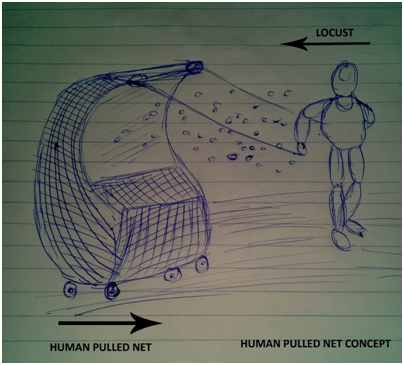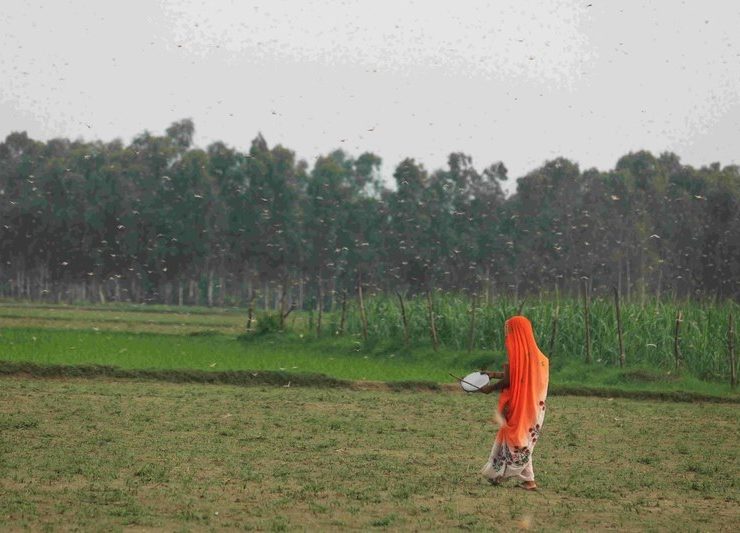Converting Locust Invasion from a Threat to a Blessing in Kenya and Africa

Dr. Jack Githae is a professional FAO and UNDP trained…
Read Next
Apparently the current locust invasion in Northern Kenya is not only a concern and a great threat to Kenya but also to the rest of Africa. This is because many communities in Kenya, East Africa and indeed the rest of Africa have not yet recovered from the recent and ongoing flooding and landslides emanating from unprecedented phenomenon of climate change. The excessive rain and flooding destroyed thousands of hectares of crop land, predisposing the communities concerned to eminent hunger and starvation just a few months before the onset of the seasonal droughts normally experienced between January and May every year in most parts of East Africa and indeed Africa.
The current locust invasion implies that unless it is very quickly contained it will clear the little food and vegetation which survived the excessive rainfall and flooding consequently the emerging/inevitable droughts will find the people and livestock already hungry thereby minimizing chances of drought survival in both human and livestock. It is in view of this reality that the need for mitigating against the impact of current locust invasion in Kenya arises. By the same token there is need for us in Africa to explore and understand the genesis of locust invasion with a view to innovating alternative ways of taking advantage of the crises.
WHAT ARE LOCUSTS?
Locusts are short-horned grasshoppers in the family Acrididae, which have a swarming phase when their populations become dense enough. The insects are normally solitary, but under certain favorable conditions of drought followed by rapid vegetation growth they become more abundant and change their behavior and habits.
Serotoninin their brains triggers a dramatic set of changes: they start to breed abundantly, becoming nomadic/ migratory.
They form bands of wingless nymphs which later become swarms of winged adults that freely move around and rapidly strip fields and cause damage to crops. The adults are powerful fliers; they can travel great distances, consuming most of the green vegetation wherever the swarm settles. (source: www.wikipedia.com)
The emerging climate change and global warming will make the grasshoppers becoming locust more frequent, we should prepare to take advantage of harvesting the insects to enhance our wellbeing and survival as the inevitable repercussions keep emerging. It may also be necessary in future to explore controlled and manageable production of the locust as human and livestock food, as indeed they are easier, more useful and more productive than many other insects like the crickets that have been earlier proposed for human and livestock feed.
BLESSING IN DISGUISE
Massive harvesting, drying and preserving them for usage as human food and/or livestock feed is the way to go. They make very good ingredients in supplementary diet for poultry, pigs, dogs, cattle, sheep and goats as they have high quality protein content.
The following are improvised methods of harvesting locust that may be used where applicable
- Using herbal bushes, ideally those that produce irritable smoke to paralyze and immobilize the insects to enhance massive collection and immediate drying, processing and storage of the insects for future usage in both human and livestock feeds.
- Improvised wide and high roped cages lined up with fishing or mosquito nets to block and catch migrating masses of locust on the ground for immediate drying, preservation and processing the insects for immediate and future usage in human & livestock feeds.
- Usage of low-flying helicopters equipped with cages hanging under the helicopter lined with mosquito/ fishnets which is flying towards the migrating insects which enhances their capture as the flee towards the direction of their migration route which is towards the helicopter. The cage should have provision for preventing insects from flying out of it and also a base that allows safe carriage of the captured locust before the helicopter has collected enough to appropriately transport, offload, dry, preserveand process the insects for immediate and future usage in human & livestock feeds.

- Similarly vehicles and in particular pick-ups, Lorries and tractors with trailers can be improvised into locust trapping cages where helicopters are not available or applicable. Even horse and donkey wagons, bicycles and motorbikes can be improvised for the same purpose. The harvested locusts would be immediately dried, preserved and stored for immediate and future usage in human & livestock feeds.
- Individuals armed with appropriate cut bushes may also immobilize collect and immediately dry and preserve the insects for their own use as human & livestock feeds immediately or in future. NB. The more people we engage in the immobilization, collection, drying and processing of the insects for human and livestock consumption within the insect’s migratory routes the sooner their population and migration is curtailed thereby converting the threat to a blessing.

- Make trappers with drums, iron sheets, bright lights and fresh burning bushes. The trappers burn fresh grass and the rising smoke makes the insects dizzy. The grasshoppers smash against the iron sheets, falling straight into the drums.
- We have developed a herbal pesticide formulation in powder form which we are convinced may be useful in protecting food crops against locust destruction when prepared in liquid form and sprayed on crops and/or vegetation vulnerable to locust destruction in the locust migration routes prior to the locust invasion. The formulation may be available for both small scale and large scale usage at any given time. We are ready and willing to release samples for trial in the locust invaded areas provided our intellectual property rights are safe guarded and guaranteed.
Innovative entrepreneur and or government should have a standby provision for purchasing, drying and processing for harvested locust as raw materials for human and livestock feeds to take advantage of the locust invasion.
Subscribe now for updates from Msingi Afrika Magazine!
Receive notifications about new issues, products and offers.
What's Your Reaction?
 PIN IT
PIN ITDr. Jack Githae is a professional FAO and UNDP trained and accredited agricultural researcher, practitioner and consultant and a WHO accredited African Traditional medicine researcher, practitioner and consultant.




















Hello, Dr. Githae –
Thank you for your great summary of the challenges and opportunities to convert locust swarms from causes of famine into food and feed.
What response are seeing to this idea? Is this beginning to be more widely implemented?